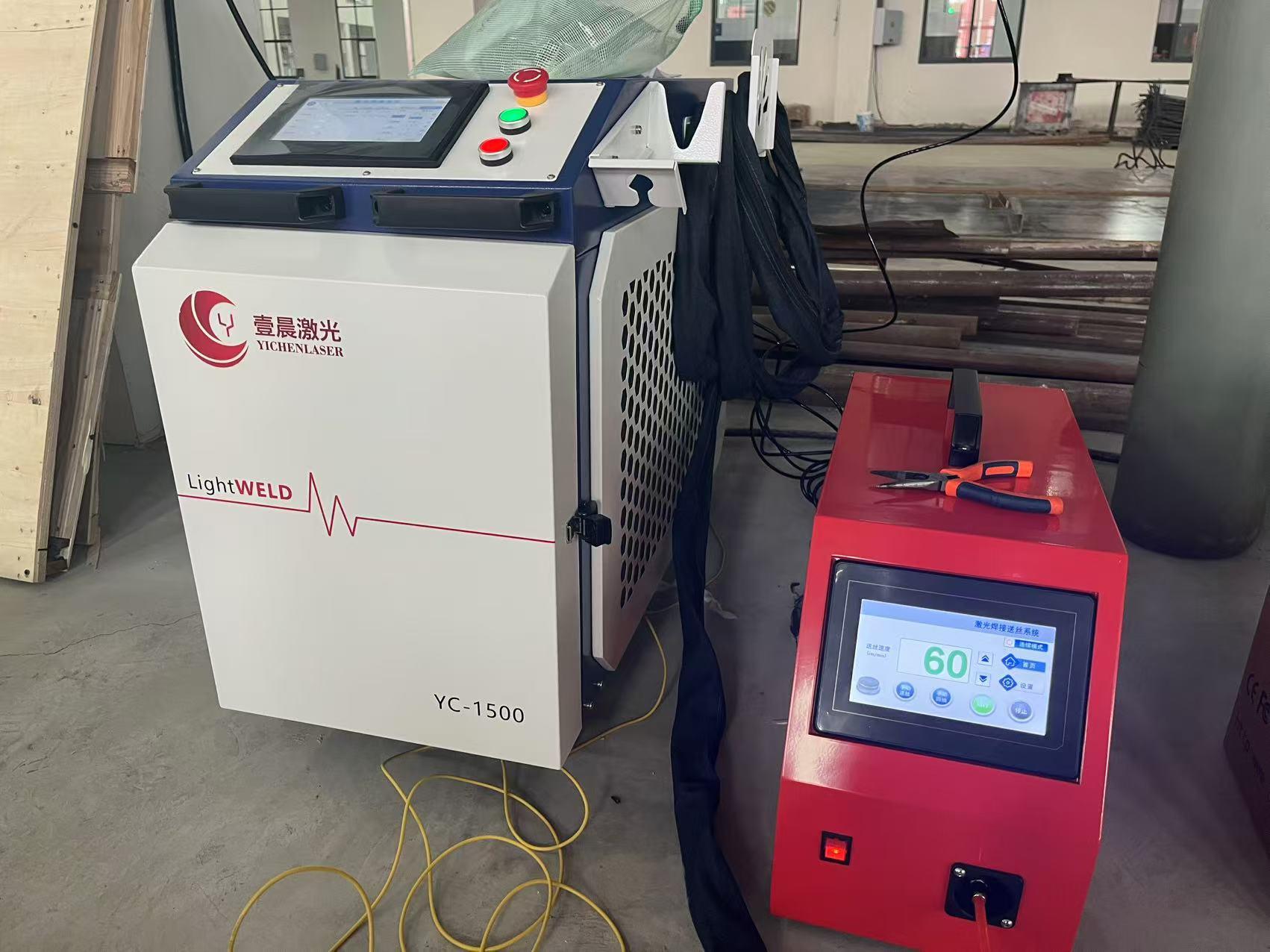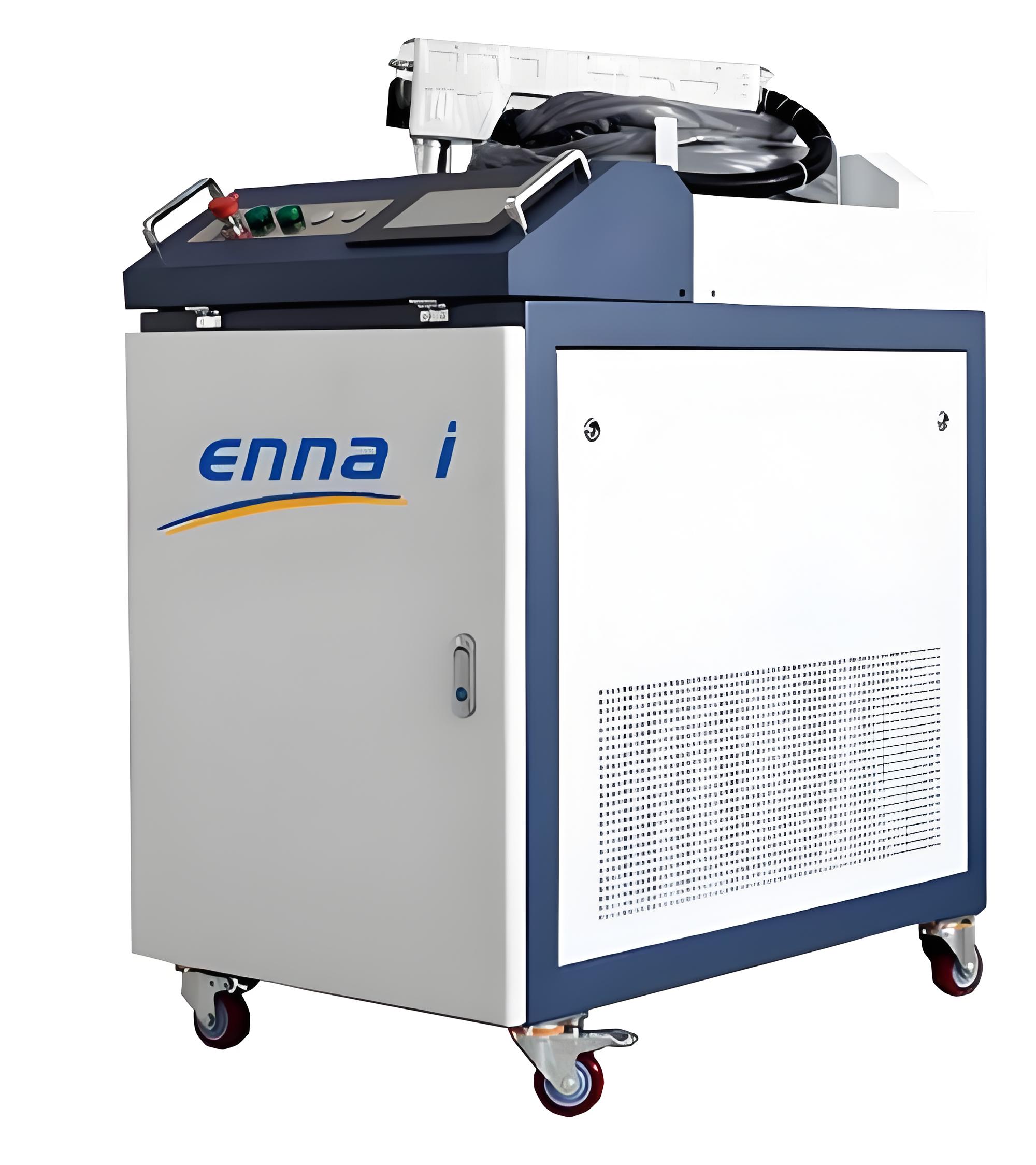As someone who’s spent years working with industrial cleaning technologies and advising businesses on surface preparation, I’ve seen laser rust removal machines revolutionize how we tackle corrosion and surface contaminants. These high-tech tools use focused laser beams to clean metal surfaces with precision, speed, and minimal environmental impact. But a question I often get from clients in manufacturing, automotive, and restoration industries is: Can a laser rust removal machine effectively remove oxide layers? The answer is a resounding yes in most cases, but it depends on the type of oxide, the material, and the machine’s settings. Drawing from my hands-on experience with laser systems, I’ll explain how these machines handle oxide layers, the factors that affect their performance, and practical tips to achieve the best results.

What Are Oxide Layers, and Why Are They a Challenge?
Before diving into laser rust removal, let’s clarify what oxide layers are. When metals like iron, steel, aluminum, or copper are exposed to oxygen, moisture, or other environmental factors, they form oxide layers—compounds like rust (iron oxide), aluminum oxide, or copper oxide. These layers can weaken the metal, affect its appearance, or interfere with processes like welding, coating, or bonding. I’ve seen oxide layers cause headaches in projects, from restoring vintage cars to preparing steel beams for construction, where a clean surface is critical.
Unlike loose rust or dirt, oxide layers are often tightly bonded to the metal, making them harder to remove with traditional methods like sandblasting or chemical cleaning. This is where laser rust removal shines, offering a non-contact, eco-friendly solution. Below, I’ll explore how these machines work against oxide layers and what you need to know to use them effectively.
How Laser Rust Removal Machines Work
Laser rust removal machines use high-intensity laser beams to ablate (vaporize or dislodge) contaminants from a metal surface. The laser energy heats the oxide layer, causing it to break down or detach while leaving the base metal largely unaffected. I first encountered this technology while consulting for a shipyard, where we used a laser to clean rusted steel hulls. The results were impressive: no chemicals, no abrasive waste, and a pristine surface ready for painting.
The process works because:
Selective Ablation: The laser targets the oxide layer’s absorption properties, heating it without damaging the underlying metal.
Precision: Adjustable settings allow you to control the laser’s intensity, pulse duration, and focus, making it versatile for different oxides.
Non-Contact: Unlike grinding or sandblasting, there’s no physical wear on the surface, preserving delicate or intricate parts.
But not all oxide layers are created equal. Let’s look at how lasers perform against different types and what factors influence their success.
Can Laser Rust Removal Machines Remove Oxide Layers?
Yes, laser rust removal machines can effectively remove most oxide layers, including rust (iron oxide), aluminum oxide, and copper oxide, among others. However, the efficiency depends on the type of oxide, material substrate, laser specifications, and operator technique. Here’s a detailed breakdown of these factors.
1. Type of Oxide Layer
Different oxides have unique properties that affect how easily a laser can remove them:
Rust (Iron Oxide): Rust is relatively loose and absorbs laser energy well, making it one of the easiest oxides to remove. I’ve used lasers to clean rusted steel tools in minutes, leaving a shiny surface.
Aluminum Oxide: This is a harder, more adherent layer. It requires higher laser power or multiple passes but can be removed effectively with the right settings.
Copper Oxide: Often found on copper or brass, this layer is softer and responds well to laser cleaning, though it may need fine-tuned settings to avoid surface discoloration.
Other Oxides (e.g., Titanium, Magnesium): These vary in difficulty but are generally removable with specialized lasers.
My Tip: For stubborn oxides like aluminum oxide, consult the laser manufacturer for recommended settings or test a small area first.

2. Material Substrate
The underlying metal affects the laser’s performance. For example:
Steel and Iron: These have high thermal conductivity, making them ideal for laser cleaning as the metal dissipates heat quickly, minimizing damage.
Aluminum: Its reflective nature can make laser cleaning trickier, requiring lower power to avoid burning the surface.
Delicate Metals (e.g., Copper, Thin Sheets): These need precise settings to prevent warping or discoloration.
I once worked on a project restoring an aluminum sculpture with a thin oxide layer. We used a low-power laser to avoid overheating, and the results were flawless, but it took careful calibration.
My Tip: Check the metal’s properties and adjust the laser’s power and pulse frequency accordingly.
3. Laser Specifications
Not all laser rust removal machines are suited for every oxide. Key specs to consider include:
Power (Wattage): Higher power (e.g., 1000W) is better for thick oxide layers, while lower power (e.g., 50-200W) suits thinner layers or delicate surfaces.
Pulse vs. Continuous Wave: Pulsed lasers are more precise for oxide removal, as they deliver short bursts of energy, reducing heat buildup.
Wavelength: Most rust removal lasers operate at 1064 nm (fiber lasers), which is effective for most oxides.
My Tip: For versatile use, choose a machine with adjustable power and pulse settings, like those from CleanTech or Laserax.
4. Operator Technique
Even the best laser won’t perform if used incorrectly. I’ve seen operators damage surfaces by using excessive power or moving the laser too slowly, causing heat buildup. Proper technique involves:
Adjusting Settings: Match power and speed to the oxide and metal type.
Consistent Movement: Move the laser steadily to avoid over-treating any area.
Testing: Always test on a small, inconspicuous area to fine-tune settings.
| Factor | Impact on Oxide Removal | Consideration | Recommended Action |
|---|---|---|---|
| Type of Oxide | Rust is easier, aluminum oxide is harder | Identify oxide type | Adjust power for stubborn oxides |
| Material Substrate | Reflective metals need lower power | Check metal properties | Use low power for aluminum, copper |
| Laser Specs | Power and pulse affect efficiency | Match specs to task | Choose pulsed lasers for precision |
| Operator Technique | Improper use can damage surface | Train operators | Test settings, move steadily |
Advantages of Using Laser Rust Removal for Oxide Layers
Laser rust removal offers several benefits over traditional methods like sandblasting, chemical cleaning, or grinding. Here’s why I recommend it for oxide removal:
Eco-Friendly: No chemicals or abrasive media, reducing waste and environmental impact.
Precision: Removes oxide layers without damaging the base metal, ideal for intricate parts or historical restorations.
Minimal Heat Impact: Pulsed lasers minimize heat transfer, preserving the metal’s integrity.
Versatility: Effective on various oxides and metals, from steel to aluminum to copper.
Low Maintenance: No consumables like sand or chemicals, just electricity and occasional lens cleaning.
I’ve used lasers to clean rusted industrial machinery and oxidized aluminum panels, and the results are consistently cleaner and faster than traditional methods.

Challenges and Limitations
While laser rust removal is highly effective, it’s not without challenges. Here are some I’ve encountered and how to address them:
1. Stubborn Oxides
Thick or tightly bonded oxides, like heavy aluminum oxide, may require multiple passes or higher power, increasing time and energy costs. I faced this with a heavily oxidized aluminum boat hull, where we needed a 1000W laser and several passes to get a clean surface.
Solution: Use a high-power laser and adjust the pulse frequency for deeper penetration.
2. Surface Sensitivity
Delicate or thin metals can be damaged if the laser is too powerful. I once accidentally caused slight pitting on a thin copper sheet because I didn’t lower the power enough.
Solution: Start with low power and short pulses, and test on a scrap piece of the same material.
3. Cost
Laser rust removal machines are expensive, with prices ranging from $5,000 to $50,000+ depending on power and features. For small businesses, this can be a barrier compared to cheaper methods like sandblasting.
Solution: Consider renting a machine for one-off projects or outsourcing to a service provider.
4. Operator Training
Lasers require skilled operation to avoid surface damage or inefficient cleaning. Early in my career, I saw an untrained operator burn a steel surface by lingering too long in one spot.
Solution: Invest in training or hire experienced operators, and always follow the manufacturer’s guidelines.
How to Remove Oxide Layers with a Laser Rust Removal Machine
Based on my experience, here’s a step-by-step guide to effectively remove oxide layers using a laser rust removal machine:
1. Assess the Surface
Identify the type of oxide (e.g., rust, aluminum oxide) and the base metal. Check for coatings, paints, or oils that might affect laser performance. I always clean the surface with a degreaser or alcohol wipe to remove loose contaminants first.

2. Choose the Right Laser
Select a machine with appropriate specs:
Power: 50-200W for thin oxides or delicate metals, 500-1000W for thick oxides or heavy rust.
Pulse Settings: Use short pulses for precision and to minimize heat buildup.
Wavelength: 1064 nm fiber lasers are standard for most oxides.
My Tip: Brands like CleanTech, Laserax, and P-Laser offer reliable models for oxide removal.
3. Set Up the Machine
Adjust the power, pulse frequency, and scan speed based on the oxide and metal. For rust, I start with 100-200W and a fast scan speed; for aluminum oxide, I use higher power (300-500W) and slower speed.
Test settings on a small area to ensure no damage to the metal.
Wear protective eyewear and follow safety protocols, as laser beams can be harmful.
4. Clean the Surface
Move the laser handpiece steadily in a sweeping motion, covering the surface evenly.
Monitor for signs of over-treatment (e.g., discoloration or pitting) and adjust settings if needed.
For thick oxides, use multiple passes, starting with higher power to break the layer and lower power for finishing.
5. Post-Cleaning Care
Wipe the surface with a clean cloth to remove any residue.
Apply a protective coating (e.g., anti-corrosion spray or sealant) to prevent new oxide formation, especially for outdoor metals.
Inspect the surface to ensure all oxide is removed and the metal is undamaged.
My Tip: Keep a log of settings for each material type to streamline future cleaning tasks.

My Experience: Lessons from the Field
One of my most memorable projects was using a 500W laser to clean oxidized steel beams for a construction site. The rust was thick, but the laser stripped it away in hours, leaving a smooth surface ready for coating—something that would’ve taken days with sandblasting. However, I also learned a lesson with a delicate aluminum panel where I used too much power, causing slight surface damage. That taught me to always test settings and prioritize precision over speed.
Laser rust removal machines are incredibly effective for oxide layers, but success depends on choosing the right equipment, understanding the material, and using proper techniques. With the tips above, you can confidently tackle oxide removal and achieve professional results. If you’re considering a laser for your project or facing specific challenges, drop a comment—I’d love to share more insights from my work in the field!
Frequently Asked Questions
Q1: Can laser rust removal machines remove all types of oxide layers?
A: Yes, they can remove most oxides (e.g., rust, aluminum oxide, copper oxide), but stubborn layers like thick aluminum oxide may require higher power or multiple passes.
Q2: Will laser cleaning damage the underlying metal?
A: Not if used correctly. Proper settings and steady movement prevent damage. Test on a small area and use low power for delicate metals like aluminum or copper.
Q3: Are laser rust removal machines cost-effective for oxide removal?
A: For large or frequent projects, they’re cost-effective due to no consumables and fast results. For small jobs, renting or outsourcing may be more practical.
Q4: Do I need special training to use a laser rust removal machine?
A: Yes, training is recommended to understand settings, safety protocols, and techniques. Improper use can damage the surface or the machine.






